Roping: The Sport of Cowboys
Home Ranch guests and employees alike often spend their free time learning to rope, which has quickly caught on as the ranch's sport of choice.
By Molly Murphy
On quiet afternoons around the barn at The Home Ranch, a guest ranch located in Clark, Colorado, the unmistakable swoosh of a good rope slicing through the air can often be heard, followed by a metallic clang as the rope settles around Buster the Roping Dummy's neck. Led by Kellen Carlson, Home Ranch's head wrangler, guests and employees are taught roping's practical application and various throwing techniques.
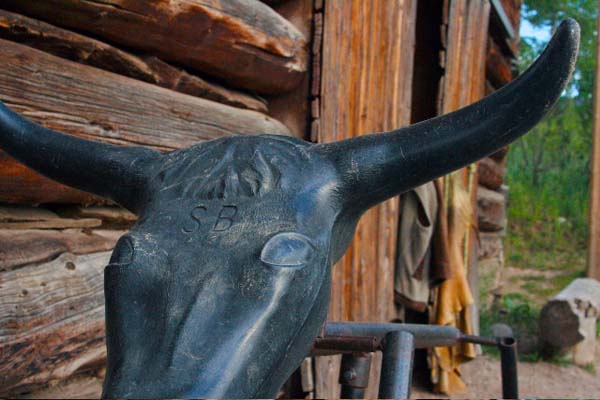
Buster, The Home Ranch's roping dummy.
Roping has many useful applications when working on a horse or cattle ranch. As mentioned in my previous branding article, calves are often roped during branding and doctoring, because it is actually the least stressful way to restrain them. Knowing how to rope can also be very helpful when working with horses, whether to catch an unruly horse in a safe manner or when training a horse to accept restraint before saddling.
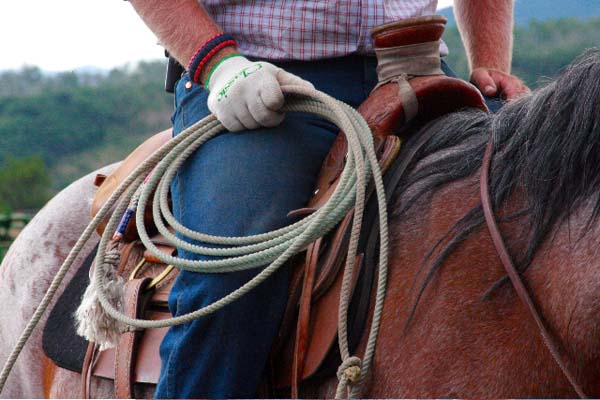
Riders hold the slack of the rope and the reins in one hand and throw their loop with the other.
Team roping is also a popular rodeo event. In team roping, the calf is released from the chute followed by two riders, called the header and the heeler. The header throws his rope first with the aim of roping the cattle's head in order to immobilize it somewhat so that the heeler can rope the cow's back legs. As soon as the header has made his catch, he dallies, tightening up on his loop and turning the steer to the left. As soon as the heeler has control of the cow's legs, both ropes are taut and the two roping horses are standing facing each other, the time stops.

Riders first throw the loop, singling a steer out of the herd.
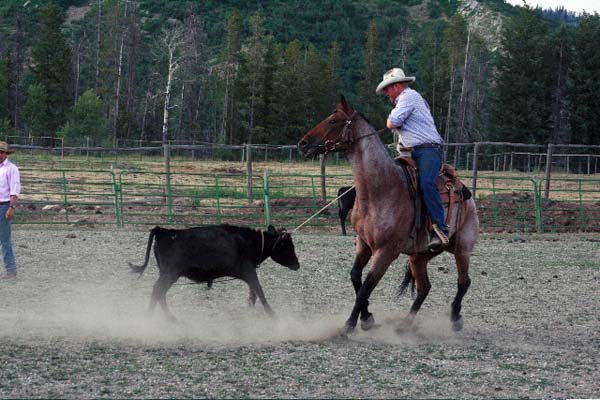
Riders then dally, or tighten up on the rope and turn the steer to the left.
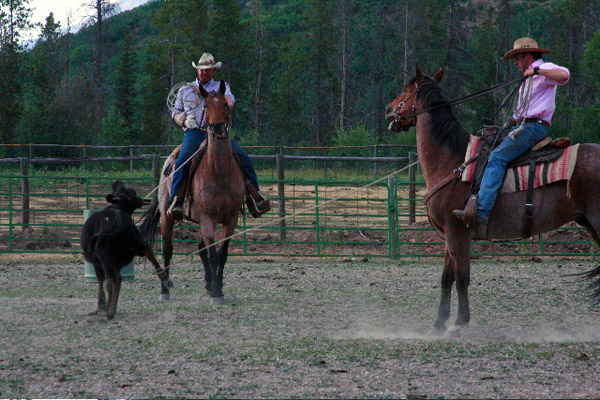
As soon as the header has made his catch, the heeler ropes the back legs. In competition team roping, catching only one back leg instead of 2 results in a 5 second penalty.

As soon as both riders have made their catches, they pull the ropes taut and face each other, at which point the time stops.
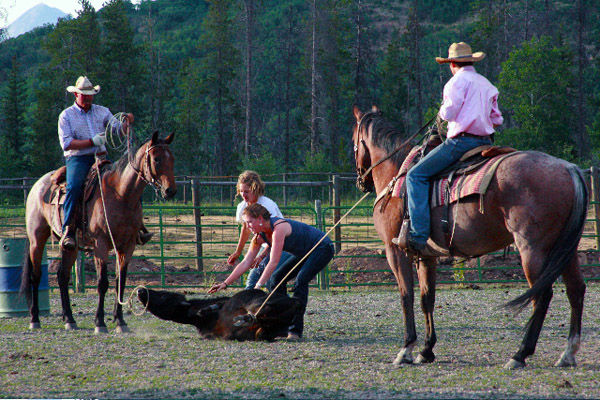
Ground crew then goes out to certify the catch and release the steer.
Due to the popularity of this rodeo event and the rising interest of Home Ranch wranglers to try their hand at the sport, the ranch has organized "Roping Wendesdays", where the wranglers will meet in the evening prior to barn dance to practice their roping skills. As soon as a wrangler has begun to feel comfortable roping Buster the dummy, they graduate to riding horses while attempting to rope steers in the ranch's outdoor arena, learning to dally from horseback, stretch the steer out, and how to re-release the steer quickly and easily.
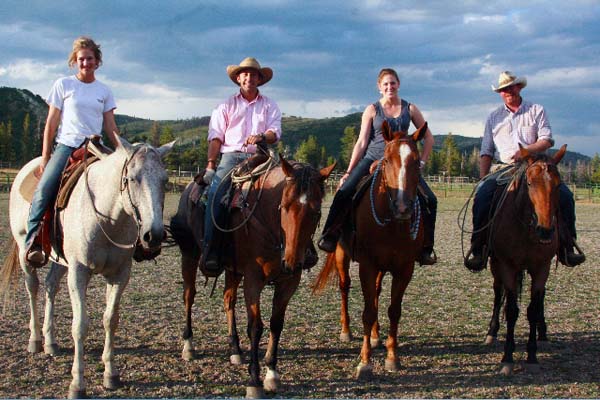
The Home Ranch Wednesday roping team, Lindsey, Alec, Libby and Kelly.
Though Roping Wednesdays may be the newest addition to the Home Ranch's many activities and events, roping is a time-honored tradition that is sure to continue on for a long time.
Team Roping Scoring
- The header wants to make the catch as quickly as possible, but without breaking the barrier separating the chute from the arena. If the header's horse breaks the barrier before the steer, a 10 second penalty is added to the team's final score.
- If the heeler catches only one back leg instead of both, a 5 second penalty is assessed.
- There are only 3 "legal" catches a header can make: both horns, one horn and the head, or the neck.
About the Author: Molly Murphy is a college student at KSU studying Creative Writing and an English rider. For her dude ranch blog on Equitrekking.com, she writes about her adventures as a wrangler at The Home Ranch, a Colorado dude ranch that has been welcoming guests since 1980. Visit The Home Ranch and other great dude ranches in Equitrekking Vacation Guide and visit The Home Ranch's website.




